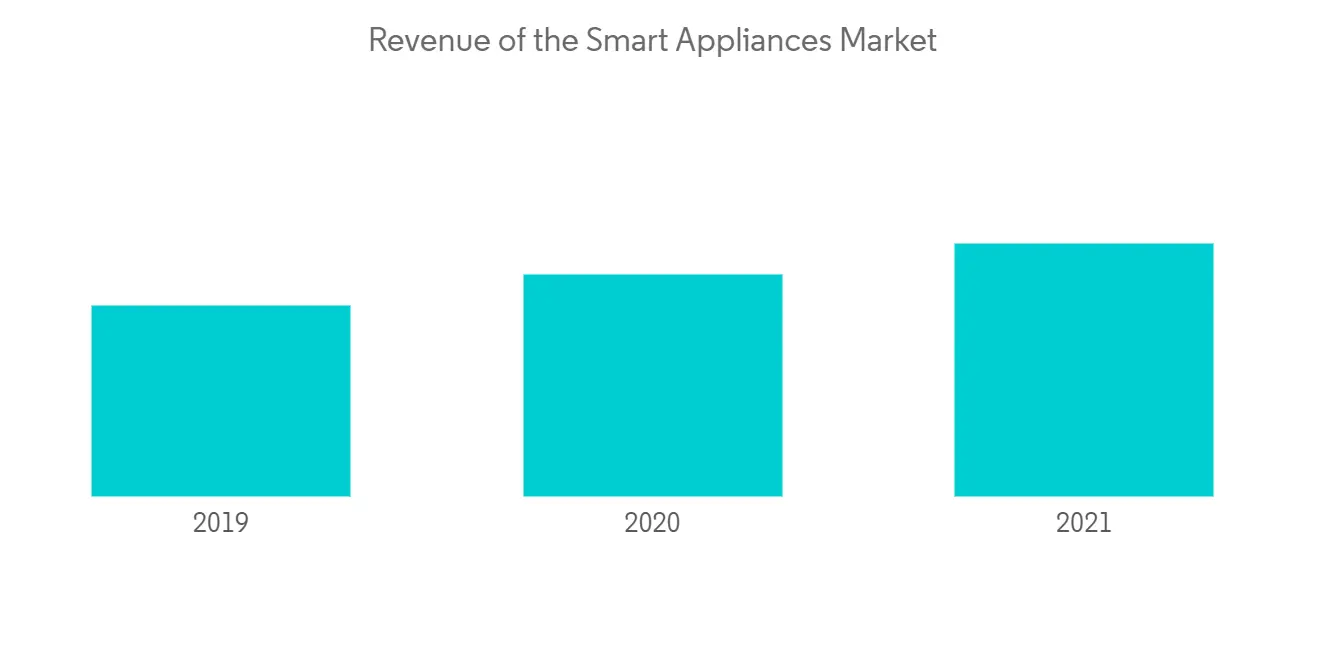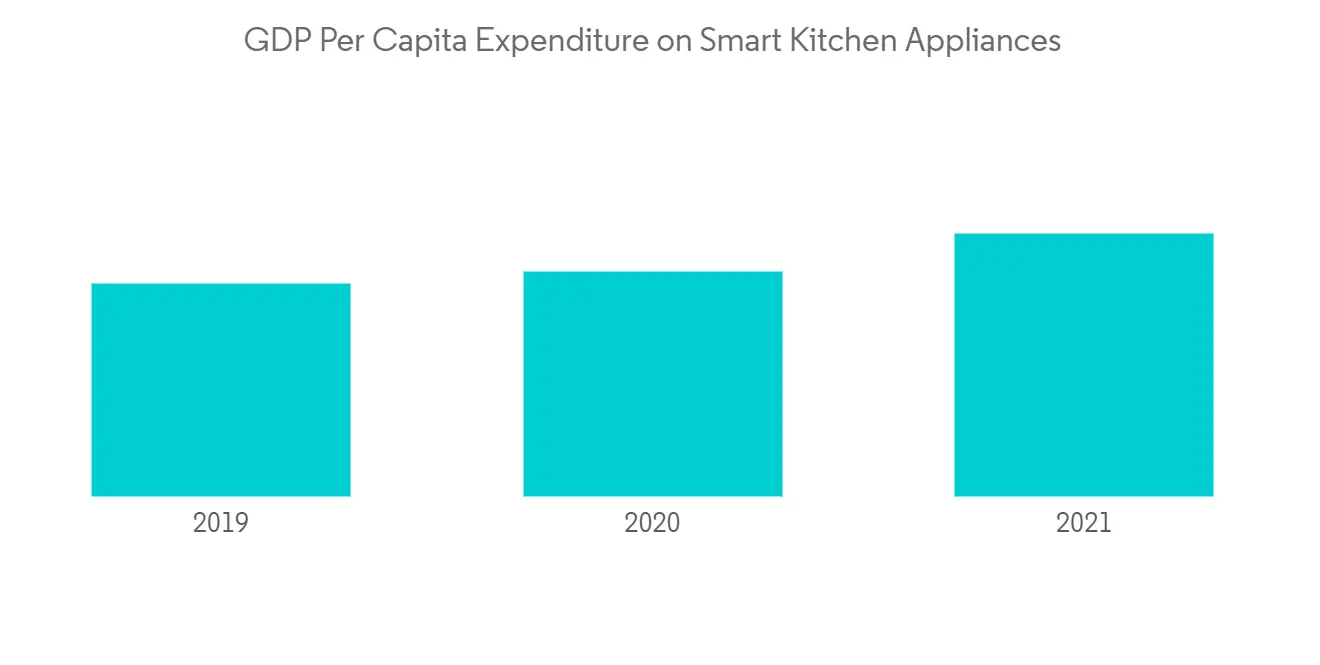 |
市場調査レポート
商品コード
1248844
スマートクッカー市場- 成長、動向、予測(2023年-2028年)Smart Cooker Market - Growth, Trends, and Forecasts (2023 - 2028) |
||||||
● お客様のご希望に応じて、既存データの加工や未掲載情報(例:国別セグメント)の追加などの対応が可能です。 詳細はお問い合わせください。
| スマートクッカー市場- 成長、動向、予測(2023年-2028年) |
|
出版日: 2023年03月25日
発行: Mordor Intelligence
ページ情報: 英文 150 Pages
納期: 2~3営業日
|
- 全表示
- 概要
- 目次
スマートクッカー市場は、予測期間中にCAGR5%で成長する見通しです。
世界のスマートクッカー市場は、COVID-19の流行により確かに減速しましたが、流行後の期間には徐々に牽引力を増しています。世界中の政府がロックダウンを実施し、産業界の大半のプレーヤーに影響を与え、人々は家の中に閉じこもることを余儀なくされ、人との接触が減りました。COVID-19の流行期に企業の継続性を維持するため、大半の企業は従業員の在宅勤務を許可しています。このことが、予測期間を通じてスマートホームデバイスの市場成長を抑制すると予想されます。社会的距離の規範を守るために生産業務に課される制限は、エレクトロニクス分野の開拓を阻害し、スマートクッカー市場のシェアを制限すると予測されています。エレクトロニクス分野の生産活動は、COVID-19危機のために中断されています。さらに、COVID-19の発生により、国際的な国境が封鎖され、世界中でスマートクッカー装置や関連製品の需要が著しく低下しています。
スマートクッカーとは、テクノロジーを使って調理プロセスを自動化するガジェットです。温度や調理時間、さらには運転中の食材の追加などもすべてこの方法で管理することができます。従来の調理器と比較して多くの利点があるため、スマートクッカーの人気が高まっています。
スマートクッカーはハイテク多機能オーブン、つまり「スマートクッカー」であり、いくつかの基本的なコマンド(多くはボタンを押すだけ)だけで様々な調理を行うことができ、調理プロセスに関わる推測を軽減することができます。調理手順全体が機械化されています。調理器具は、理想的な温度と時間で食事を調理し、電源を切り、自ら保温を行います。
スマートクッカーの市場動向
スマート家電の普及が市場を牽引する
スマート家電は通常、全く新しい製品を製造するのではなく、既存の製品を新しい機能で強化するインクリメンタルな開発です。比較的高い製品価格が、多くの収益の主な源泉となっています。顧客は、掃除機ロボットやスマートコーヒーメーカーのような低価格の小型家電から始めることが多く、一方、すでに他のセグメントの製品を所有している顧客は、冷蔵庫のような大型で高価な家電を購入する傾向があります。また、欧米ではより緩やかな普及が見込まれますが、アジアではより早く普及が進むと考えられます。
スマート家電の市場が急速に拡大しているのには、さまざまな理由があります。スマート家電の市場が急速に拡大している理由は、消費者の生活をより快適にしてくれるからです。また、ホームオートメーションのニーズが高まっていることも、スマート家電の需要を高めています。スマート家電の省エネ性能も、需要を後押ししています。例えば、一部のスマートオーブンはセンサーを搭載しており、料理が終わったことを感知して自動的にオーブンのスイッチを切り、キッチンが過熱するのを防いでエネルギーを節約することができます。消費者がエネルギーコストを節約するのに役立つだけでなく、この種の技術は二酸化炭素排出量を削減することにもつながります。

可処分所得と購買力の向上が市場を牽引する
スマートキッチンアプライアンスは環境に優しく、ユーザーフレンドリーでエネルギー効率に優れており、消費者は近代的でスマートな家電に魅了されています。さらに、消費者は可処分所得と購買力の上昇により、高級スマートキッチンアプライアンスへの支出を上げることができ、これが需要と市場を押し上げています。スマートキッチンアプライアンス市場では、主要な調理器具の分野が最も速い速度で増加しました。生活水準の向上とスマート連動型家電への関心の高まりにより、この分野はスマートキッチン家電の世界市場で最大のシェアを占めています。また、これらの家電製品に使用されている技術の向上や、ネットワーク機能の追加も拡大を後押ししています。
スマートクッカー市場は、ユーザーフレンドリーでエネルギー効率の高い家電製品に対する消費者の需要が高まるにつれて拡大すると予想されます。スマートクッカーは、テクノロジーを活用することで、より迅速かつ効果的に業務を遂行することができます。スマートクッカーは、従来のキッチン機器よりもエネルギー効率に優れています。所有者に通知しながら、必要に応じて自動的に家電製品を停止する機能は、スマートキッチン機器の需要を押し上げる主な要因の1つです。

スマートクッカーの産業概要
スマートクッカー市場は細分化されています。中堅・中小企業は、技術改良や製品革新により新規契約を獲得し、新市場を開拓することで、市場での存在感を高めています。
その他の特典です:
- エクセル形式の市場予測(ME)シート
- 3ヶ月のアナリストサポート
目次
第1章 イントロダクション
- 調査の成果
- 調査の前提条件条件
- 調査対象範囲
第2章 調査手法
第3章 エグゼクティブサマリー
第4章 市場の洞察と力学
- 市場概要
- 市場促進要因
- 市場抑制要因
- バリューチェーン/サプライチェーン分析
- ポーターのファイブフォース分析
- 新規参入業者の脅威
- 買い手/消費者の交渉力
- 供給企業の交渉力
- 代替品の脅威
- 競争企業間の敵対関係の強さ
- COVID-19の市場への影響について
第5章 市場セグメンテーション
- カテゴリー
- 小さい
- ミディアム
- 大型
- 流通チャネル
- ホームセンター
- スペシャリティストア
- オンライン
- その他の流通チャネル
- 地域
- 北米
- アジア太平洋地域
- 欧州
- 中東・アフリカ地域
- 世界のその他の地域
第6章 競合情勢について
- 企業プロファイル
- Fagor
- Panasonic
- Gaggenau Hausgerate
- Midea
- Instant
- Breville
- Gourmia
- Tayama
- Power Pressure Cooker XL
- Presto
- Cosori
第7章 未来市場
第8章 免責事項
The smart cooker market is poised to grow at a CAGR of 5% during the forecast period.
The global smart cooker market has certainly slowed down due to the COVID-19 outbreak but has gradually gained traction in the post-pandemic period. Governments all around the world have enacted lockdowns, which have had an impact on the majority of industrial players and forced people to stay inside their houses, reducing human contact. To maintain company continuity during the COVID-19 pandemic, the majority of businesses have allowed workers to work from home. This is anticipated to restrain the growth of the market for smart home devices throughout the forecast period. The limitations placed on production operations to adhere to social distance norms are predicted to impede the development of the electronics sector, which is then anticipated to limit the market share for the smart cooker market. Manufacturing operations in the electronics sector have been interrupted due to the COVID-19 crisis. Furthermore, the COVID-19 outbreak has resulted in the sealing of international borders, which has caused a severe decline in the demand for smart cooker devices and related products across the globe.
A smart cooker is a gadget that automates the cooking process using technology. The temperature, cooking time, and even ingredient additions while the appliance is running can all be managed in this manner. As it offers many advantages over conventional cookers, smart cookers are growing in popularity.
Smart Cookers are high-tech multi-function ovens, or "smart cookers," which may cook in a variety of ways with only a few basic commands (often a button push), reducing some of the guesswork involved in the cooking process. The entire cooking procedure is mechanized. The appliance cooks the meals at the ideal temperature and time, turn them off, and maintains warmth on its own.
Smart Cooker Market Trends
Increasing Popularity of Smart Appliances is Driving the Market
Smart appliances are typically incremental developments that enhance existing products with new capabilities rather than producing entirely new products. The relatively high product prices are the main source of a large number of revenues. Customers frequently start with lower-cost small appliances like vacuum robots or smart coffee makers, whereas those who already own products from other segments are more likely to buy large, more expensive appliances like refrigerators. In Europe and North America, we anticipate a more gradual adoption of devices, whereas Asia will accept them more swiftly.
There are many reasons why the market for smart appliances is expanding so quickly. These gadgets make consumers' lives easier because they can control all of their devices from one location. The growing need for home automation technology has also increased the demand for smart appliances. The capacity of smart appliances to save energy is another aspect driving demand. As an illustration, some smart ovens feature sensors that can tell when food is done and switch the oven off automatically to save energy and prevent the kitchen from being overheated. In addition to helping consumers save money on their energy costs, this kind of technology also lowers carbon emissions.

Rising Disposable Income and Purchasing Power is Driving the Market
Smart Kitchen Appliances are eco-friendly, user-friendly, and energy efficient, and consumers are lured to modern and smart appliances. Additionally, consumers can raise their spending on luxury smart kitchen appliances due to rising disposable income and purchasing power, which is driving up demand and the market. In the smart kitchen appliance market, the major cooking appliance segment increased at the fastest rate. Due to rising living standards and growing interest in smart-linked home appliances, this segment holds the largest share of the global market for smart kitchen appliances. The improved technology used in these appliances and their additional networking features also support the expansion.
The smart cooker market is expected to grow as consumer demand for user-friendly, energy-efficient appliances rises. Utilizing technology, smart cooker appliances may complete duties more swiftly and effectively. Smart cookers are more energy-efficient than conventional kitchen equipment. The capability to automatically shut off the appliances as needed while informing the owner is one of the main factors boosting the demand for smart kitchen equipment.

Smart Cooker Industry Overview
The smart cooker market is fragmented. Mid-size and smaller businesses are expanding their market presence by gaining new contracts and tapping new markets due to technological improvements and product innovations.
Additional Benefits:
- The market estimate (ME) sheet in Excel format
- 3 months of analyst support
TABLE OF CONTENTS
1 INTRODUCTION
- 1.1 Study Deliverables
- 1.2 Study Assumptions
- 1.3 Scope of the Study
2 RESEARCH METHODOLOGY
3 EXECUTIVE SUMMARY
4 MARKET INSIGHTS AND DYNAMICS
- 4.1 Market Overview
- 4.2 Market Drivers
- 4.3 Market Restraints
- 4.4 Value Chain / Supply Chain Analysis
- 4.5 Porter's Five Forces Analysis
- 4.5.1 Threat of New Entrants
- 4.5.2 Bargaining Power of Buyers/Consumers
- 4.5.3 Bargaining Power of Suppliers
- 4.5.4 Threat of Substitute Products
- 4.5.5 Intensity of Competitive Rivalry
- 4.6 Impact of COVID-19 on the market
5 MARKET SEGMENTATION
- 5.1 Category
- 5.1.1 Small
- 5.1.2 Medium
- 5.1.3 Large
- 5.2 Distribution Channel
- 5.2.1 Home Centres
- 5.2.2 Speciality Stores
- 5.2.3 Online
- 5.2.4 Other Distribution Channels
- 5.3 Geography
- 5.3.1 North America
- 5.3.2 Asia-Pacific
- 5.3.3 Europe
- 5.3.4 Middle East and Africa
- 5.3.5 Rest of the World
6 COMPETITIVE LANDSCAPE
- 6.1 Company Profiles
- 6.1.1 Fagor
- 6.1.2 Panasonic
- 6.1.3 Gaggenau Hausgerate
- 6.1.4 Midea
- 6.1.5 Instant
- 6.1.6 Breville
- 6.1.7 Gourmia
- 6.1.8 Tayama
- 6.1.9 Power Pressure Cooker XL
- 6.1.10 Presto
- 6.1.11 Cosori
